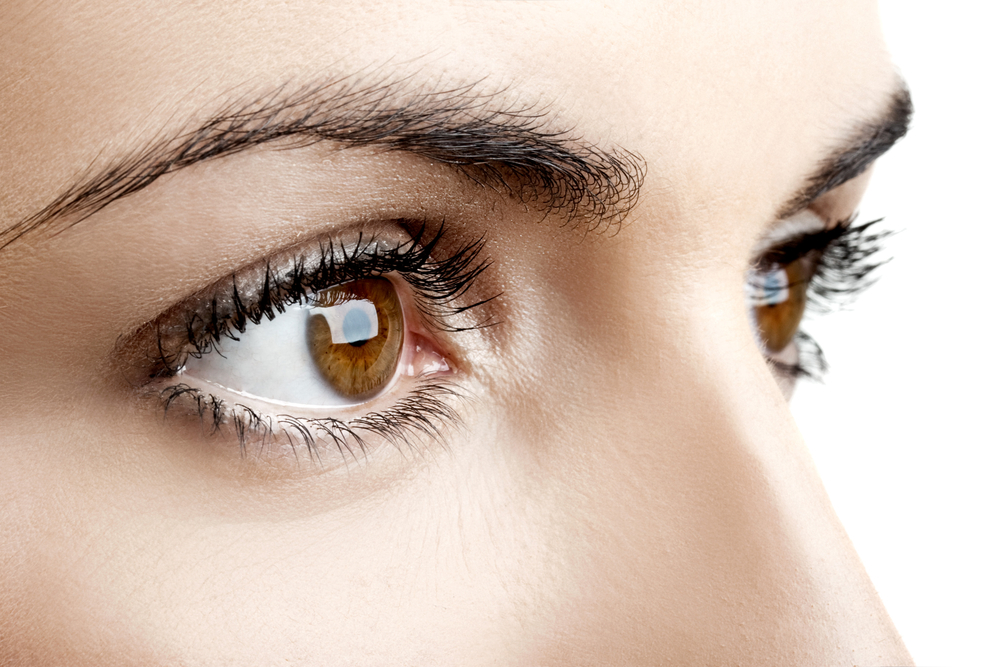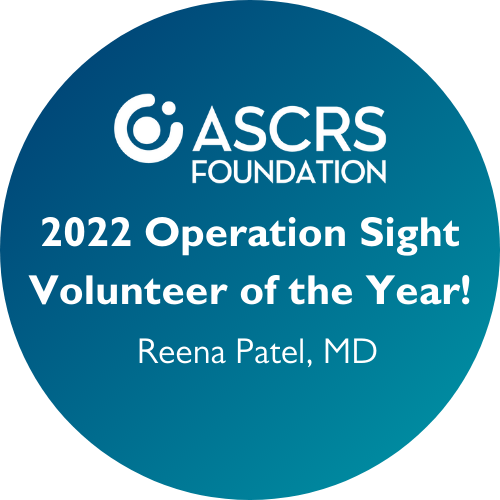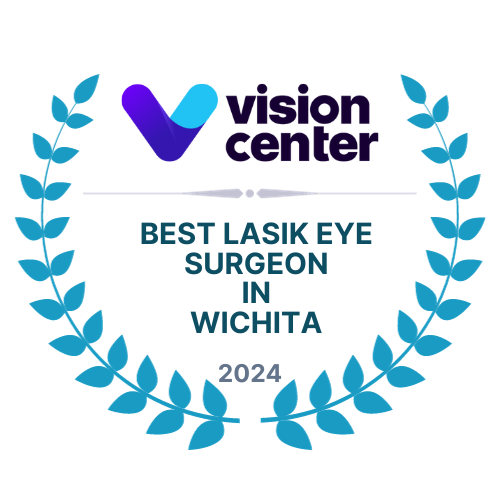Although glasses and contact lenses have made great advancements over the years in terms of style and comfort, many people who sport glasses or place contacts in their eyes imagine what it would be like to wake up and see clearly without any hassle. Now with LASIK surgery, this dream can become a reality. If you would like to improve your vision through LASIK, Dr. Patel at the Witchita Vision Institute in Witchita, Kansas, can help you do just that.
What Is LASIK?
Despite familiarity with the term, many people are unaware that LASIK actually stands for laser-assisted in-situ keratomileusis. It can be used to treat myopia, commonly referred to as nearsightedness, hyperopia, which is usually termed farsightedness, and astigmatism. Most patients notice an immediate improvement in vision following the surgery, often no longer needing glasses or contacts at all. LASIK has become so common, in fact, that nearly 30 million people around the world have benefited from this procedure.
Which Type of LASIK Is Best?
For many years, eye surgery was performed using the microkeratome blade, and for some patients, that is still the preferred option. Patients with mild to moderate prescriptions with regular corneas may choose this method, especially if finances are an issue.
Currently, however, many patients and their doctors opt for blade-free surgery. This bladeless approach to improving vision requires the use of an IntraLase femtosecond laser in order to create a flap in the corneal tissue. Because this procedure enables customization of the corneal flaps, all patients, but especially those with thin, flat, or steep corneas benefit from this type of treatment.
In fact, more patients who had undergone bladeless surgery achieved 20/20 vision and had better experiences with night and low-light vision. Those patients who had microkeratome surgery in one eye and IntraLase in the other reported by a three to one margin that they preferred the vision in the one that used IntraLase. Studies have shown that better flap adherence, reduced dryness, and better vision were all reported.
How to Determine if You Are a Candidate
In order to be eligible for this procedure, you must meet certain criteria. First, you must be at least 18 years of age or older, since it is critical that you have a stable prescription. Otherwise, the refractive error may change. You must also be free of any eye injury or infection, and you should not be suffering from glaucoma or cataracts.
In addition, your immune system cannot be compromised if you are intending to undergo this type of surgery. This means that you should not struggle with lupus, rheumatoid arthritis, or fibromyalgia. Women who are pregnant or nursing should wait to have surgery at least six weeks after giving birth and six weeks after concluding breastfeeding. Finally, certain medications may be problematic, so Dr. Patel will discuss your medical history with you prior to giving you the go-ahead for LASIK.
The Consultation
Once you have determined that you meet the requirements, scheduling a free consultation with Dr. Patel would be the next step on your path to better vision. In addition to getting your complete medical history, Dr. Patel will examine your eyes and take measurements. One of the most important things that she will be looking for is corneal thickness since a certain amount of thickness is necessary in order to retain the strength and shape of the cornea after surgery.
Dr. Patel will also discuss your vision goals at this time. Although most people desire similar vision in both eyes, others, for example, may consider monovision, in which one eye is corrected for nearsightedness and the other for farsightedness. This is a more common procedure for people in their 40s or 50s who want to achieve quality vision without having to wear reading glasses. Dr. Patel wants to ensure that you are getting the procedure that best meets your needs.
Finally, if you are a serviceman or woman in the United States military or employed by NASA and would like to see an improvement in your vision, you might like to discuss custom IntraLase with Dr. Patel. By using a computer that creates an individual blueprint of each eye, a plan is created for your custom laser treatment. All service personnel in NASA and the military all allowed to have this type of surgery.
Prior to the Procedure
If you are approved for surgery, there is little you need to do ahead of time. Because your vision will not be perfect immediately following the procedure, you will need to make arrangements for someone to drive you home. If you wear contacts, you will be asked to stop wearing them about a week or so prior to your treatment since contacts change the shape of your cornea, and clearly, this is an impediment to successful surgery.
LASIK Treatment Session
Pre-Surgery Preparation
When you arrive for your scheduled treatment session, Dr. Patel will aim to make you as comfortable as possible prior to surgery. It is recommended that you wear comfortable clothes for the procedure and arrive wearing no makeup or jewelry. You will be given medication to relieve any anxiety, and you will be able to relax and let the medication take effect before heading to the laser suite.
Initial Stages
As soon as you are brought in to the laser suite, you will lie down on the bed, and you will be administered a topical anesthetic which helps to numb your eyes. After that, your eyelids and the eye area will be cleaned. Dr. Patel will be sure to explain each step of the procedure along the way. In this way, you will be better informed and also more confident and reassured.
Once Dr. Patel has positioned you under the laser, an eyelid holder known as a speculum will be placed between your eyelids. This is to ensure that your eyelids remain open and that they do not blink; this is one of the most common anxieties that patients have about the surgery, but it is really not a concern at all due to the speculum.
Next, a suction ring is placed on the eye. This device lifts and flattens the cornea. It also helps to prevent the eye from moving. Patients typically find that the combination of the eyelid holder and the suction ring causes pressure but no pain. At this point, you will be ready for the procedure itself.
Surgical Procedure
Depending on the type of surgery that you are having, Dr. Patel will take either a microkeratome or an IntraLase femtosecond laser (for bladeless surgery) to create a small, hinged flap of very thin corneal tissue. She will then lift and fold the flap back. An excimer laser that is programmed with your eyes’ specific measurements is then placed above your eye.
As you look at a fixation light, or target light, Dr. Patel will use the laser to sculpt and reshape the cornea to its desired curvature. During this time, you may hear a clicking noise or notice a slight order; both of these are completely normal and expected. Finally, Dr. Patel will then reposition the flap that was previously folded back. The entire length of the procedure is about 10 minutes for each eye from start to finish.
Immediately After Your Procedure
Immediately after your procedure, you will notice that your vision is already improved, although it may still be a bit foggy. You will be led to the recovery room to relax until your driver is ready to escort you home. Once home, you will be instructed to sleep as much as possible since that will enhance the healing process.
Because rubbing your eyes may damage the healing cornea, you will need to refrain from doing so. Goggles that are specially designed to stay in place while lying down can help protect your eyes from being rubbed inadvertently while you sleep.
Follow-Up Care
Over time, the eye will heal itself. In order to prevent infection, inflammation, and dryness, Dr. Patel will prescribe eye drops for you that will treat those potential conditions. You will already have been instructed to obtain those prior to your procedure, and you will be administering these to yourself several times per day. In order to prevent infection, you will have to wait about a week before wearing eye makeup. Purchasing brand-new cosmetics for the eyes is also recommended.
You should be able to drive yourself to your follow-up appointment with Dr. Patel the next day. She will examine your eyes and discuss with you when you can resume strenuous physical activity. You should be able to return to work in a day or two. It is also recommended that you avoid bright sunlight for several days following treatment, and special sunglasses can be provided for this purpose.
New Vision
Although results may vary somewhat, most patients find that their vision is much improved following surgery. Most people achieve 20/20 vision, and nearly all acquire 20/40 vision. Patients typically find that their vision stabilizes within a period of three to six months.
Dr. Patel will be able to easily track your progress since you will have regular follow-up appointments for several months after your procedure. For those patients who are in their 40s or 50s, reading glasses will still be required unless they have had the procedure for monovision.
An Improved Outlook
Because so many people desire an active lifestyle that is free from the encumbrances of glasses or contacts, LASIK surgery has become an increasingly popular option over the past years. Furthermore, as technology has continued to advance, new developments have made this treatment easier and more accessible along with constantly improving results. Once you have decided to explore the possibility of improved vision, you can take that next step to determine your eligibility.
By calling to schedule a free consultation with Dr. Patel, you can review your options for the surgical procedure. If it is decided that you meet the candidacy criteria, you can then determine which sort of treatment is best for you–microkeratome or bladeless. Remember that the procedure itself is quite short, taking only about 10 minutes per eye, leaving you with improved sight by the time your friend or family member drives you home that same day!
With a follow-up regimen that consists mainly of eye drops and avoiding rubbing your eyes, you will soon be able to lead a more active lifestyle. As your eyesight stabilizes over three to six months, you will begin to fully appreciate the freedom of excellent vision. If you are ready to ditch your glasses or contacts, call Dr. Patel at the Witchita Vision Institute in Witchita, Kansas and get ready to see the world in a whole new light.







